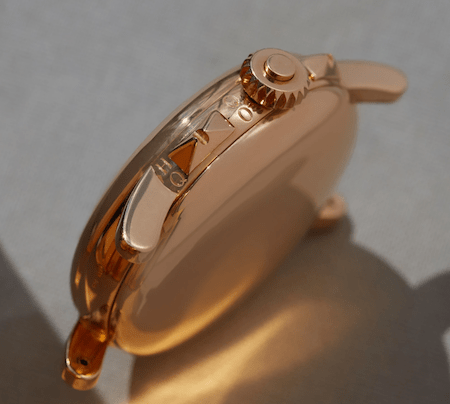
Clickbait question aside, I have no evidence that A Collected Man sold the the Sultan of Brunei’s Philippe Dufour Grande et Petite Sonnerie rose gold wristwatch to someone trying to launder money. Evade taxes. Subsidize criminal activity. I have every reason to believe a fabulously wealthy collector bought the Philippe Dufour watch to have and to hold, from yesterday forth. Someone for whom $7.6m is pocket change. Also true . . .

Expensive art – a description that certainly applies to the Philippe Dufour watch – is used to launder billions of dollars of dirty money worldwide.
There are a lot of bad actors out there: drug cartels, corrupt government officials, Russian oligarchs looking to avoid sanctions, etc. There are many different ways these money-making monsters exploit the art market to launder their ill-gotten gains, but let’s keep it simple.
Let’s say you’re a cartel jefe with millions of dollars in dirty money cluttering-up your closet. So you buy a really expensive painting, car, watch or other collectible, either at auction or from a private dealer. You relocate your purchase to a free port for storage, where it isn’t taxed and ownership remains confidential. You visit a friendly bank, arrange a loan against the item, et voila! Clean money.

To keep it less simple (i.e., make it harder for law enforcement to trace the transaction), bad guys add multiple layers to the process, such as a “straw buyer” masquerading as a legit collector working with an “art advisor.”
Quoting the U.S. Senate’s pre-pandemic report The Art Industry and U.S. Policies That Undermine Sanctions, moneylaunderingnews.com tell us how criminals exploit the art world’s “don’t ask, don’t tell” loophole:

Secrecy is “pervasive” in the art industry. Specifically: “A large number of art sales happen through intermediaries referred to as ‘art advisors’ who can represent both purchasers and sellers. In a typical transaction, a purchaser may not ask who owns the piece of art they are purchasing; the seller may not ask for whom it is being purchased or the origin of the money. And in general an art advisor would be reluctant to reveal the identity of their client for fear of being cut out of the deal and losing the business.”
As a result, “auction houses treat an art agent or dealer as the principle purchaser of art, even if they [have] reason to believe they were working with an undisclosed client.” This creates a “significant AML [anti-money laundering] vulnerability” because “this practice enables the auction house to perform due diligence on the art agent or dealer instead of identifying and evaluating the undisclosed client.”

Note: auction houses and art dealers aren’t legally required to ensure that their clients’ money is clean. The Senate report mentioned above recommended adding art dealers to the Bank Secrecy Act’s anti-money laundering requirements. That didn’t happen.
The big auction houses have voluntary AML protocols (e.g., Christies’ Anti-Money Laundering Programme). Everyone else? Nada. Why would they? Would you want to report millions of dollars in dirty money to the authorities? Not if you wanted to stay alive.
Which leave us with an interesting question: do the stratospheric prices recently received for rare watches have anything to do with money laundering, where the higher the price paid the better?
watchpro.com’s article Why Philippe Dufour and F. P. Journe watches are soaring in value attributes the massive price inflation to the watches’ “cast-iron investment potential.” Which may also be true, given the timepieces’ [potential] value to the criminals turning dirty money into spendable income. Just sayin’.
[Click here to read more about laundering money via art]
It is what it is, but collectibles, antiques, and art as an investment (or for money laundering purposes) is a terrible idea.
Not really. If you can get something from someone famous who’s dead, then you have something unique since they can’t make any more. This is the problem with watches per se since they always are making them. Now from a defunct brand or with someone famous, it’s a different story. Van Gogh’s will never significantly drop in price.
Yeaaaahhhhh…but what outsiders don’t understand about these markets is that if you can’t spot the fish at the table, you are the fish.
I’m no collectible speculator, but tastes and even collector demographics and solvency can be fickle. The solid track record means you’re not getting in on the ground floor.
I totally believe that a good portion of the high end horology boom market to be the upscale equivalent of hookers getting paid in pre-paid cards.